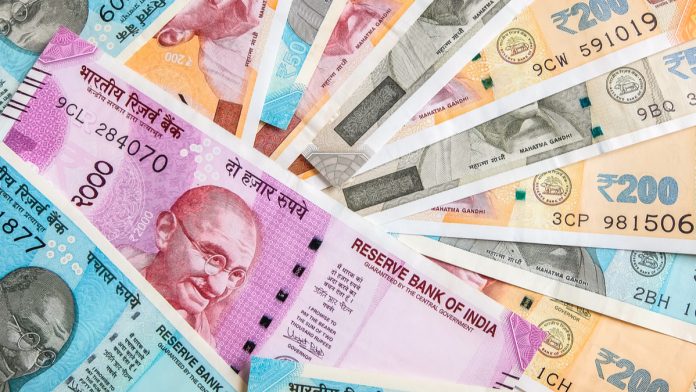- Indian Rupee (INR) falls as risk sentiment dives
- Indian manufacturing PMI eases
- US Dollar (USD) rises to a fresh 10-month high
- US JOLTS job openings due
The US Dollar Indian Rupee (USD/INR) exchange rate is edging higher after gains in the previous session. The pair rose +0.17% yesterday, settling on Monday at 83.17. At 10:30 UTC, USD/INR trades +0.02% at 83.19 and trades in a range of 83.16 to 83.36.
The Indian rupee is falling against a stronger USD in risk-off trade and as investors digest the latest Indian manufacturing activity data, which shows that factory activity grew at the slowest pace in five months but remained solid. The manufacturing PMI was at 57.5 in September, down slightly from 58.6 in August and below forecasts of 58.1. Delving deeper into the numbers, demand remains strong, driving business confidence to the highest level this year, even as inflationary pressures increased slightly.
This was the 27th straight month that the index remained above the 50 level, which separates expansion from contraction. Both new orders and output rose sharply thanks to strong domestic and foreign demand.
The increase in input prices has spurred companies to raise selling prices. The data comes after figures showed that inflation in India eased in August to 6.83% down from July’s 15-month high of 17.44%. However, it remains above the Reserve Bank of India’s 226 percent.
The US Dollar is rising across the board. The US Dollar Index, which measures the greenback versus a basket of major currencies, trades +0.05% at the time of writing at 107.12, extending gains from yesterday.
The US dollar is heading higher for a second straight day and hits a fresh 10-month high as treasury yields remain elevated.
Strong U.S. economic data and hawkish comments from Federal Reserve speakers have boosted expectations that interest rates in the U.S. will stay higher for longer.
Manufacturing data yesterday showed that the sector in the US took a step further towards recovery last month as both production picked up and unemployment rebounded. The ISM manufacturing PMI rose to 49, up from 47.6 and when I had a forecast of 47.8. The data is just the latest in a strong Baxter of U.S. economic data from a week in recent weeks from the US, which fuels bets that the Fed will need to keep interest rates higher in order to cool the economy.
Looking ahead, attention is now on jolts job openings, which are expected to hold steady September at 8.8 million. Investors will be watching for any signs that the US job market could be cooling.





